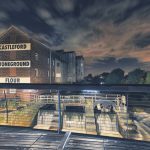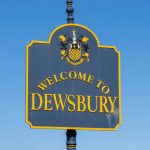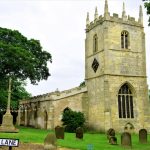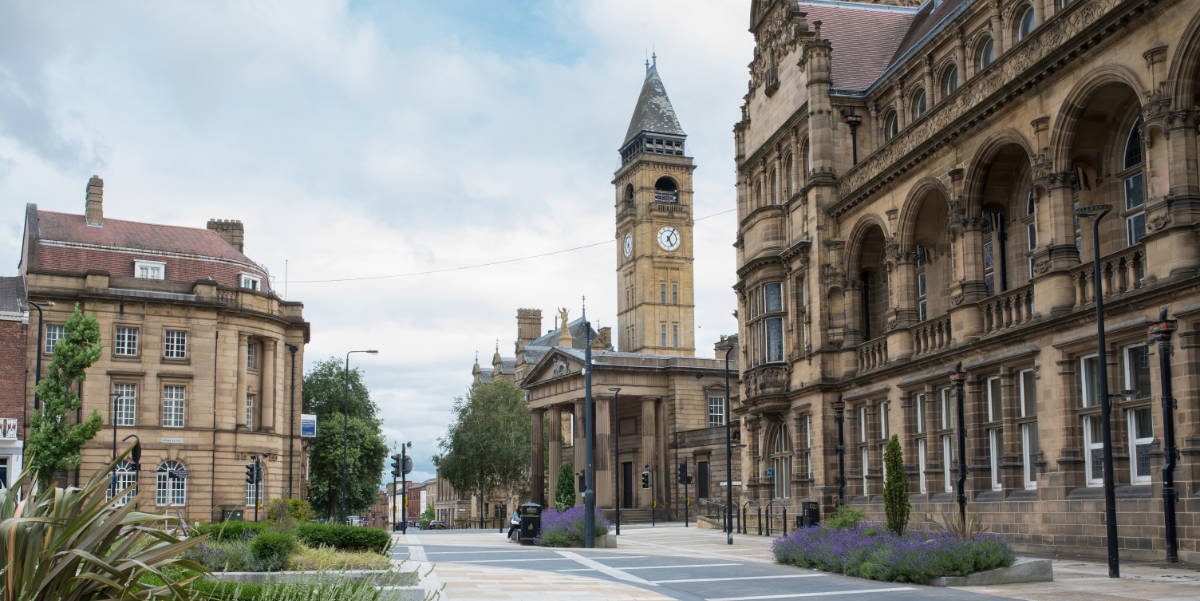
Your quick guide to one of Yorkshire’s proudest cathedral cities.
Wakefield holds the seat of West Riding County Council and has done so for two hundred years and counting. This makes it one of the most important cities in the area. We can’t wait to get stuck into the history for this city. If it has a cathedral and a population topping 100k, we want to know how it became so big, so old, and so famous. Here’s the Five Minute Spare travel guide to Wakefield to help you decide if you want to visit or not.
What is Wakefield Famous For?
Back in the old days, Wakefield was famous as a mining community and cathedral town. Nowadays it homes to the largest high-security prison in Western Europe. It’s also famous for being one of the three cities in Yorkshire which grows the most rhubarb.
Early Wakefield History
Back before the Romans invaded, this area was inhabited by the Brigantes tribe. This large tribe was a collection of smaller tribes, who united for safety reasons. The Brigantes were fearsome, especially to the Romans when they did show up. A chariot found in the surrounding towns proves this area saw human habitation during the Iron Age. There have been flint tools found that add to the metaphorical fire, which date to the Bronze Age. So we know that the area also saw settlement then.
Cut forward to around the Birth of Christ and you encounter a Wakefield which was shortly invaded by the Romans. The Romans had the same trouble trying to conquer England as everyone else had. The further north you got, the harder it was for those invaders to keep control over the masses. The Romans gave it a good shot, placing garrisons and starting cities throughout the land. They crisscrossed the UK with roads, then slammed a wall up when they got so far north to try to stop the Scots from stealing all the cows.
They built a road which connected Wakefield with Pontefract and then on to Manchester. This road passed through Wakefield by way of a fjord in the river. The fjord would be where the current Wakefield Bridge is. This put Wakefield on the (Roman) map. The connectedness of the roads meant the town could grow as a passing place or stopping point on long journeys north.
Saxon Wakefield
The next people to move into Wakefield were the Angles and Saxons, circa 600 AD. The Vikings then contributed by sailing up the River Calder and ransacking Yorkshire thoroughly. They split it into the Ridings to control it better and divided that control eventually to the Wapentakes.
The Wapentakes would report to the local commander, and the commander reported to his warlord, and so on. Wakefield was in the Wapentake of Agbrigg. The Vikings invaded between the 800s and the 10th century. After that, it was less of an assault and more of a slow assimilation of their peoples into the other tribes. Towards the end of this era, Alfred the Great set in motion the unification of England and the rest, as they say, was history.
During the Medieval Era
In true Domesday Survey style, Wakefield was recorded under a different name and belonged to the king. First King Edward in 1066, later King William. Although the survey marks Wakefield as one of the smallest 40% of towns in England at the time, identifying only 1.7 households, those households somehow included:
- 51 fields to plough.
- 13 teams of men to plough them.
- 22 smallholders (must have been a big household).
- 3 priests
- 3 x 3 + 6 x 4 leagues of mixed woodland.
- And 2 churches.
Somehow, amid all this, the Domesday Surveyors found this part of the land to be unoccupied and wasteland. The Open Domesday site clarifies this as Wakefield has multiple entries for the same space. There was also a manor at Wakefield, which might explain why one household could hold many people.
During the time the book was written, the people of Yorkshire had to endure the Harrying of the North. This turbulent period of Yorkshire history saw King William’s men regularly putting down rebellions, building castles, and garrisoning men to stop the locals from taking back control.
In 1100 the Normans replaced the cross-shaped local church with a central tower, instead.
In 1204 the town gained a charter for a market. A market square grew around the church.
War Of The Roses
During the 13th century, the town was the scene of an important battle in the War of the Roses. The town was a haven for Royalist supporters and eventually became a stronghold for the wealthier supporters of the king. The battles were caused by the Duke of York, who found the king’s follies to be unbearable. Richard would capture King Henry and hold him prisoner. He even marched south to deal with the king’s relatives but he was grossly outnumbered.
During the battle, York occupied Sandal Castle. Despite this, he decided to sortie out into the surrounding lands. Historians argue over why he would leave and put himself in this kind of danger. The general consensus is that a betrayal from one of his lords led him out of the castle, where he was immediately killed. His army was dissolved and his most loyal leaders were executed. The good old crown of England didn’t stop there, though. They also made sure to murder the families of those loyal leaders, too.
In 1315 the Norman church tower collapsed and took more than a decade to rebuild. It was completed in 1329. In 1342, the Chantry Chapel began building. It finished in 1356.
During the later Civil War, Sir Thomas Fairfax attacked the town and captured it. 1500 troops plus a Royalist Lieutenant General were taken prisoner.
All Saints was renovated in 1715 with the Packhorse Bridge opened in 1730.
A Bit of WakefieldTrivia
Let’s take a momentary history break and focus on some trivial but still interesting things that you may or may not have been dying to know…
- Wakefield represents one point on the Rhubarb Triangle. In the good old days, there were 200 businesses growing the sour treat in the area. The triangle consists of Wakefield, Leeds, and Bradford. Their rhubarb is still used today for products like locally produced gin.
- Historians like to argue over things and one thing they argue over is the name ‘Wakefield.’ Where did it come from? There are two beliefs. One is that the name comes from a field belonging to Waca, a good Anglo-Saxon/Viking-era name. A second belief is that the name evolved from the Old English word for a Wake or Watch – both of which take place after a person’s death. It’s possible Waca/Wacu was field people gathered in after a death. Despite this potentially morbid name, the town turned out to be a fun place.
- While the Romans were in Wakefield, they set up a mint. We know this because of the 200+ coin moulds which excavators found between 1697 and the 1830s. There may even still be some in the dirt. These moulds would be used to form each British-Romano coin out of molten metals. The coin moulds were found in the Lingwell Gate area.
- During the Medieval Period, Wakefield earned the nickname of the Merrie City. It was a happy place to be. The people enjoyed watching sporting events regularly, and archery was a favoured sport. As an interesting aside, it would be English longbowmen who went on to win several battles in different wars around the world. Famously the Agincourt archers held back the tide of thousands of French soldiers. The army contained around 5,000 archers and only 1,000 men at arms. Although they won a momentous victory, King Henry later died anyway and lost the war.
- Grain storage was what made Wakefield popular in the Industrial Era. Other town industries including cloth dealing, cattle trading, glass making, soap making, and coal mining, have all been preferred trades in Wakefield over the years.
There are lots of other fun fact titbits but we will get to them as we go.
The Industrial Revolution
This was a busy time and Wakefield grew quickly throughout the 1800s. Plenty happened including the following…
The Courthouse was built in 1810, still a marvellous attraction for IG photos today.
In 1832 the town became a borough but the celebrations were curtailed by an outbreak of cholera.
In 1836, the church became the property of the Bishop of Ripon.
1847 was a busy year with Wakefields Central Market Hall and the chantry bridge getting renovated. Plus its famous gaol first took a prisoner. It had 732 cells and they soon filed up!
1849 saw the dreaded cholera make another appearance. The price that many towns paid for their rapid growth in this period
In 1858 the West Yorkshire Miners’ Association (WYMA) set up a home in the town. It was headquartered at 1 Arundel Street.
In 1868 the town gained the Technical and Art College, which is now Wakefield College.
In 1874 the Almshouse Lane Baths opened, where the poor could bathe. The present town hall opened in 1880 courtesy of Alderman Lee.
It was 1888 when the Diocese named All Saints church a cathedral, instead and the town became a city.
By 1891 the population of Wakefield was 33,000 people. The county hall opened in 1898 and the bull ring expanded.
Phew that was a lot of building work in a 100-year period
Modern Era Wakefield
The early 1900s saw Wakefield become an important industrial centre with an abundance of textile mills and of course mining. The economy was strong and Wakefield added a tram network in 1904. By 1911 the population had boomed to around 51,000 people, however, dark clouds were forming.
World War I
Like many other cities in the UK, Wakefield suffered in World War I. A large contingent of the city’s young men enlisted in the armed forces and sadly many never returned. This, combined with the need to retool local industries towards wartime production brought a lot of uncertainty and a degree of hardship to the local inhabitants.
Wakefield soon recovered after the war, and although the textile industry was still a huge part of the local economy new industries began to emerge. Engineering and chemical production grew and with it, the local infrastructure. This would later make it a target when the second world war began.
World War II
Wakefield with its growing engineering production played an important role during World War II. Its factories were involved in the war effort, manufacturing munitions and supplies while the city also accommodated evacuees and served as a base for military operations. This made it a prime target for German bombers though and on one night in September 1940 around 50 bombs hit the city alone!
The Post-War Industrial Decline
Post War Wakefield faced the challenges of declining importance of both textiles and to a degree coal mining, although the latter didn’t really bite until the late 1970s. Still, it was not all doom and gloom as many of the slums were cleared and modern housing estates built to replace them.
Other industries including glass manufacture began to emerge but the city remained heavily dependent upon declining industries throughout the later part of the 20th Century. By 1971 the population was 59,000 not significantly higher than it was at the turn of the century.
The main bright spot during this time period came on the Rugby pitch with Wakefield Trinity being a powerhouse in the 1960s. They won the Championship two years running (1967 & 68) and also added three Challenge Cup wins.
The 1990 & the 2000s A Time Of Redevelopment
In the 1990s, Wakefield underwent several significant initiatives that revitalised the city and led to its success today. Some key developments during that period included:
Developing the Trinity Walk Shopping Centre. This was completed in 1995 and it succeeded in making Wakefield an important shopping destination for the surrounding area. This gave a significant boost to the local economy and created job opportunities.
Waterfront Development. The River Calder front became a focal point during the 1990s and soon a trendy new area sprung up. This is a continuing trend spurred by the creation of The Hepworth Wakefield art gallery in 2011. This helped promote Wakefield as a cultural tourism destination.
Urban Area renewal initiatives. The old derelict industrial sites were transformed into residential and commercial areas which boosted the neighbourhoods and provided new business opportunities.
The expansion and renovation of the Westgate railway station has also played its part in improving local commuting links. This when combined with the improved road network (think Eastern Relief Road) has made the city an attractive place to set up business and this has helped diversify the local economy.
Not surprisingly given this, the population is now close to 110,000 and it is fast becoming a must-visit place in West Yorkshire.
Overall, Wakefield is a pleasant city known for its welcoming attitude, ability to throw a good party, and a place with a good few famous tourist attractions. Is it a good place to go on holiday? No… It’s a great one. Tell the locals we said hi.
Famous People from Wakefield, West Yorkshire
Every town we review comes with it’s own peppering of celebrity status. Who are the top famous people to stay in Wakefield? We named them below but you can add your own comments at the bottom if you like. Here are our top picks:
- Playwright David Storey was born here in 1933. His script ‘This Sporting Life’ became a film in 1963.
- The singer Jane McDonald was born here in that same year.
- One of the many Archbishops of York was born in 1940 in Thornes.
- Sculptor Barbara Hepworth famously lived and worked here. The Hepworth Gallery is named in her honour.
- The author George Gissing lived here in the 1800s.
- Helen Worth is from Wakefield.
- Do you remember The Cribs? They are a band from this city.
There are dozens of others that we haven’t named but we are running out of space. Keep an eye out for Geoffrey Boycott OBE too. His lengthy cricket career is famous around the country.
Best Attractions in Wakefield
Wakefield is home to amazing attractions which make it a popular site for holidaying in the UK. Here are the top attractions you ought to see in town.
Historic sites
The old Courthouse was designed in 1806 and built-in 1810. The building is in a neo-Greek style, which you can pick out by the huge pillars at the front entrance. Although in the possession of the council, the interior remains in poor repair. Don’t go inside but do take pictures.
You should also visit the old Nostell Priory and Parkland area, hosted by the National Trust and some lovely volunteers. The House of Nostell is a Georgian treasure house with ample gorgeous gardens, its own courtyard, and a stable. Visitors are free to walk the stunning grounds and take as many photos as they like. Both Nostell Priory and Sculpture Park would make great wedding photo locations as long as you gained permission.
The Cathedral
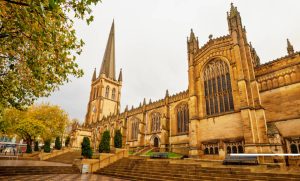
Image: Andrzej Sowa/Shutterstock.com
The main attraction everyone rushes to see is the cathedral. Wakefield Cathedral is a gorgeous old gothic-style building, built for splendour and grace rather than practicality. It is massive, has beautiful stained glass windows, and costs the same as a small country to heat each year. Go along for a service as the cathedral is still in operation. The Cathedral opened in 1350 replacing an existing chapel.
Chancery Chapel
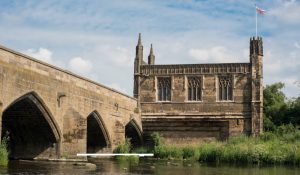
Image: DAWID DOBOSZ/Shutterstock.com
Speaking of chapels you should visit Chantry Chapel which bridges the River Calder. This remarkable building is one of the most architecturally significant bridge chapels remaining in Britain. A Grade I listed building It was built in 1356.
Cultural Sites
In 1821 the locals built a music saloon. That saloon would become a government office and would later be a dance hall. Nowadays, this building is the Wakefield Museum. Wakefield Museum details the fascinating town history which has brought the city this far. There are artefacts and exhibits to view.
As a British city, Wakefield has many museums. Of these, the Mental Health Museum is arguably the most interesting. As a nation, we have not always treated those with mental health issues in the best light. This museum documents how the earliest patients endured horrific treatments, and houses artefacts that were once medical tools.
Let’s not forget the Hepworth Wakefield, which is part art gallery and part garden. This location has inspired millions of locals to take an interest in art and creative pieces.
Outdoor Attractions
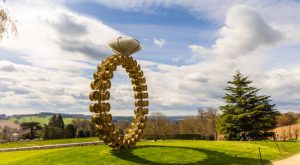
Image: Debu55y/Shutterstock.com
If you want to see some art in action, head outdoors to the Yorkshire Sculpture Park. Branded as the international home of modern and contemporary sculpture, the park stretches across 500 acres. It was first opened in the 1800s. Asides from existing sculptures, the area hosts events and sometimes welcomes visiting artists to contribute something new.
You can visit the Newmillerdam Country Park just outside the city. This place features a lake surrounded by greenery. There are swans, ducks, coots, and great opportunities to relax in the onsite café. There is also the Angler’s Country Park too, should you fancy a change.
Sports and Teams
Wakefield is home to several sporting teams across various disciplines. Here are some notable sporting teams in Wakefield:
Wakefield Trinity Rugby League Club: Wakefield Trinity is a professional rugby league club that competes in the Super League, the top-tier rugby league competition in the United Kingdom. The club, founded in 1873, plays its home matches at the Mobile Rocket Stadium in Wakefield.
Wakefield AFC: Wakefield AFC is a semi-professional football club based in Wakefield. The club was formed in 2019 and currently competes in the Northern Premier League Division One East, which is part of the eighth tier of English football. The club plays its home matches at the Rapid Solicitors Stadium.
Wakefield Harriers Athletic Club: Wakefield Harriers is an athletics club that caters to athletes of all ages and abilities. The club participates in various track and field events, cross-country races, and road races. Wakefield Harriers has a rich history and has produced numerous athletes who have represented the club at national and international levels.
Wakefield Hockey Club: Wakefield Hockey Club is a field hockey club that has teams competing in both men’s and women’s leagues. The club offers opportunities for players of all ages and abilities, from juniors to seniors. Wakefield Hockey Club has a strong reputation and has produced players who have represented England at international competitions.
Wakefield Golf Club: Wakefield Golf Club is one of the oldest golf clubs in Yorkshire, founded in 1891. It features an 18-hole course and provides facilities for both members and visitors. The club hosts various competitions and events throughout the year.
These are just a few examples of the sporting teams in Wakefield. The city also has teams and clubs in sports such as cricket, tennis, swimming, and more, catering to a range of interests and age groups.
Where to Shop in Wakefield?
If you want to go shopping in Wakefield, you have options. You can stick to the town centre and enjoy the shops around the Bull Ring, or you can visit independent malls. There is the Beck Retail Park, the Cathedral Retail Park, the Ridings Shopping Centre, and more shops on Trinity Walk.
Eating, Drinking, and Partying in Wakefield
Wakefield has something you don’t often see – a top-rated vegetarian and gluten-free restaurant. Try out Corarima. You can enjoy Brazilian food at the Estabulo Rodizio Bar & Grill. If you fancy a pint with your pie, head to the Nostalgic Kitchen which is inside the Shepherd’s Arms. The Hare & Hounds is another favourite pub. This one has little outdoor bubble pods that your group can book. Locals love a good cocktail in Jocks Cavern, inside the Bull Ring.
Other Nearby Notable Attractions
There are other towns near Wakefield which are cosier, smaller and contain attractions that you could visit while you are in the area. We happen to have travel guides to your neighbouring towns to hand, just in case you fancy exploring:
- Visit Pudsey, the town which lent its name to a bear.
- Take part in the Ilkley Festival.
- Explore the Keighley Moors, famous for their spookiness.
- Go and shop till you drop at Dewsbury outdoor market.
- Take a wander around the Batley tourist attractions.
- Hebden Bridge is known as the Jewel of the Calder Valley.
So explore West Yorkshire this year for your holidays. There really are tons of things to do.
How to Get to Wakefield?
Wakefield is a big, hard-to-miss place. Which is good for us because our directions are not that detailed.
By Road
Wakefield is bang-slap on the M1, upwards or downwards.
By Rail
There are two train stations in Wakefield. One is in Wakefield Kirkgate, the other is in Wakefield Westgate. Westgate is the more popular line.
By Air
Your nearest airport is Leeds-Bradford.
By Sea
You are landlocked in Wakefield except for the beautiful River Calder.
Got Five More?
If you find yourself at a loose end for the next five minutes, here are things that could improve your life:
- Find more Yorkshire travel guides on our site.
- Visit us on Facebook.
- Hunt for your own UK town through Five Minutes Spare and see how attractive it really is to the tourists.
Anything is possible if you learn it in five-minute chunks.
Header Image: DAWID DOBOSZ/Shutterstock.com
